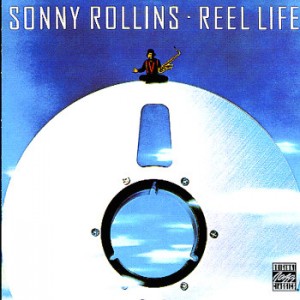 In the 1950s, tenor saxophonist Sonny Rollins’ sheer virtuosity made him a rising star in Harlem’s hard bop scene. As he progressed, his vivid solos and deft rhythmic nuances saw him stretch the form’s textures into something more tangible and tuneful than the free-tonality exercises his peers often engaged in. Unquestionably one of the greatest improvisers of his era, it’s Rollins’ melody-driven approach to jazz that has come to define his legacy. His strolling, spontaneous style seemingly paved the way for the straightahead approach to modern jazz. By the time that the 1980s rolled around, Rollins had long since established himself as one of the seminal figures in the jazz world.
In the 1950s, tenor saxophonist Sonny Rollins’ sheer virtuosity made him a rising star in Harlem’s hard bop scene. As he progressed, his vivid solos and deft rhythmic nuances saw him stretch the form’s textures into something more tangible and tuneful than the free-tonality exercises his peers often engaged in. Unquestionably one of the greatest improvisers of his era, it’s Rollins’ melody-driven approach to jazz that has come to define his legacy. His strolling, spontaneous style seemingly paved the way for the straightahead approach to modern jazz. By the time that the 1980s rolled around, Rollins had long since established himself as one of the seminal figures in the jazz world.
Though not as groundbreaking as his earlier works, the recently reissued Reel Life (1982) stands as one of Rollins’ most significant contemporary efforts. Here, in top form, Rollins combines finesse and flair with matchless fluidity as he colors the rich grooves of bassist Bob Cranshaw and drummer Jack DeJohnette while rippling through the rhythmic tide of guitarists Bobby Broom and Yoshiaki Masuo. His golden tones, unaccompanied for the first three bars of the opener, “Reel Life,” set the stage for this laidback endeavor. While the brooding blues ballad “My Little Brown Book,” echoes with timeless emotional depth, the showy fusion workout “Sonny Side Up” certainly dates itself.
Despite its slick production, which bears many of the unmistakable characteristics of ’80s jazz, it is hard not to sink into Reel Life’s effervescent compositions— especially “Rosita’s Best Friends,” a calypso gem splashed with Caribbean polyrhythms, a sunny acoustic guitar and Rollins’ trademark sparkle. Speaking of trademarks, Rollins shows off his chops on “McGHEE,” Reel Life’s headiest excursion. Always enjoyable, yet not entirely essential, Reel Life mostly appeals to the jazz enthusiast looking to bridge the gap between his 1970s and the 1980s.




